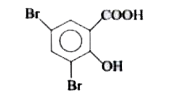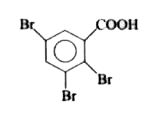The formation of O+2[PtF6]− is the basis for the formation of xenon fluorides. This is because:
O2 and Xe have comparable sizes.
both O2 and Xe are gases.
O2 and Xe have comparable ionisation energies.
O2 and Xe have comparable electronegativities.
The correct Answer is:C
To understand why the formation of O2+(PtF6)− is the basis for the formation of xenon fluorides, we can break down the reasoning into a step-by-step solution.
1. Understanding Ionization Energies:
- The ionization energy is the energy required to remove an electron from an atom or ion. In this case, we are comparing the ionization energies of oxygen and xenon.
- The ionization energy of oxygen is approximately 1175 kJ/mol, while that of xenon is around 1170 kJ/mol.
2. Comparing Ionization Energies:
- The closeness of the ionization energies (1175 kJ/mol for O and 1170 kJ/mol for Xe) indicates that both elements can exhibit similar chemical behavior when it comes to forming positive ions.
- This similarity suggests that xenon can participate in reactions in a manner analogous to oxygen.
3. Formation of O2+(PtF6)−:
- Neil Bartlett discovered that when oxygen gas (O2) reacts with platinum hexafluoride (PtF6), it forms the complex ion O2+(PtF6)−.
- This reaction demonstrates that O2 can lose an electron to form a positively charged ion, which is stabilized by the PtF6 complex.
4. Application to Xenon:
- Given the similar ionization energies, Bartlett hypothesized that xenon could also react with PtF6 in a similar manner.
- Thus, when xenon is introduced to PtF6, it can also form a complex, leading to the discovery of xenon fluorides.
5. Conclusion:
- The key reason for the formation of xenon fluorides from the reaction of O2 and PtF6 is the comparable ionization enthalpies of oxygen and xenon. This similarity allows xenon to behave like oxygen in forming complexes with fluorine.
Final Answer:
The formation of O2+(PtF6)− is the basis for the formation of xenon fluorides because the ionization enthalpies of oxygen and xenon are comparable, allowing xenon to participate in similar reactions.
---
- The ionization energy is the energy required to remove an electron from an atom or ion. In this case, we are comparing the ionization energies of oxygen and xenon.
- The ionization energy of oxygen is approximately 1175 kJ/mol, while that of xenon is around 1170 kJ/mol.
- The closeness of the ionization energies (1175 kJ/mol for O and 1170 kJ/mol for Xe) indicates that both elements can exhibit similar chemical behavior when it comes to forming positive ions.
- This similarity suggests that xenon can participate in reactions in a manner analogous to oxygen.
- Neil Bartlett discovered that when oxygen gas (O2) reacts with platinum hexafluoride (PtF6), it forms the complex ion O2+(PtF6)−.
- This reaction demonstrates that O2 can lose an electron to form a positively charged ion, which is stabilized by the PtF6 complex.
- Given the similar ionization energies, Bartlett hypothesized that xenon could also react with PtF6 in a similar manner.
- Thus, when xenon is introduced to PtF6, it can also form a complex, leading to the discovery of xenon fluorides.
- The key reason for the formation of xenon fluorides from the reaction of O2 and PtF6 is the comparable ionization enthalpies of oxygen and xenon. This similarity allows xenon to behave like oxygen in forming complexes with fluorine.
The formation of O2+(PtF6)− is the basis for the formation of xenon fluorides because the ionization enthalpies of oxygen and xenon are comparable, allowing xenon to participate in similar reactions.
Topper's Solved these Questions
- P BLOCK ELEMENTSBOOK - RESONANCE ENGLISHCHAPTER - P BLOCK ELEMENTSEXERCISE - Exercise 1 part-3
10 Videos
- P BLOCK ELEMENTSBOOK - RESONANCE ENGLISHCHAPTER - P BLOCK ELEMENTSEXERCISE - Exercise 2 part-1
12 Videos
- P BLOCK ELEMENTSBOOK - RESONANCE ENGLISHCHAPTER - P BLOCK ELEMENTSEXERCISE - Exercise 1 part-1
14 Videos
- NUCLEAR CHEMISTRYBOOK - RESONANCE ENGLISHCHAPTER - NUCLEAR CHEMISTRYEXERCISE - STAGE-II
1 Videos
- P-BLOCK ELEMENT (BORON AND CARBON FAMILY)BOOK - RESONANCE ENGLISHCHAPTER - P-BLOCK ELEMENT (BORON AND CARBON FAMILY)EXERCISE - PART - III : OLYMPIAD PROBLEMS (PREVIOUS YEARS) STAGE - V (INTERNATIONAL CHEMISTRY OLYMPIAD (IChO)) Problem 3
8 Videos
Similar Questions
Knowledge Check
The action of Br2/H2O on salicylic acid results in the formation of :
A B
B C
C D
D
On the basis of the mode of their formation the polymers can be classified
Aas addition polymers onlyBas condensation polymers onlyCas copolymersDboth as addition and condensation polymers
Formation of PCl3 is explained on the basis of what hybridisation of phosphorus atom?
View SolutionIllustrate the formation of H3O+
View SolutionThe formation of water from H2(g) and O2(g) is an exothermic process because :
View SolutionExplain the formation of H2 molecule on the basis of valance bond theory.
View SolutionName various hierarchies of categories with one basis of their formation.
View SolutionFormation of SO3 by SO2 and O2 is favoured by :−
View Solution
